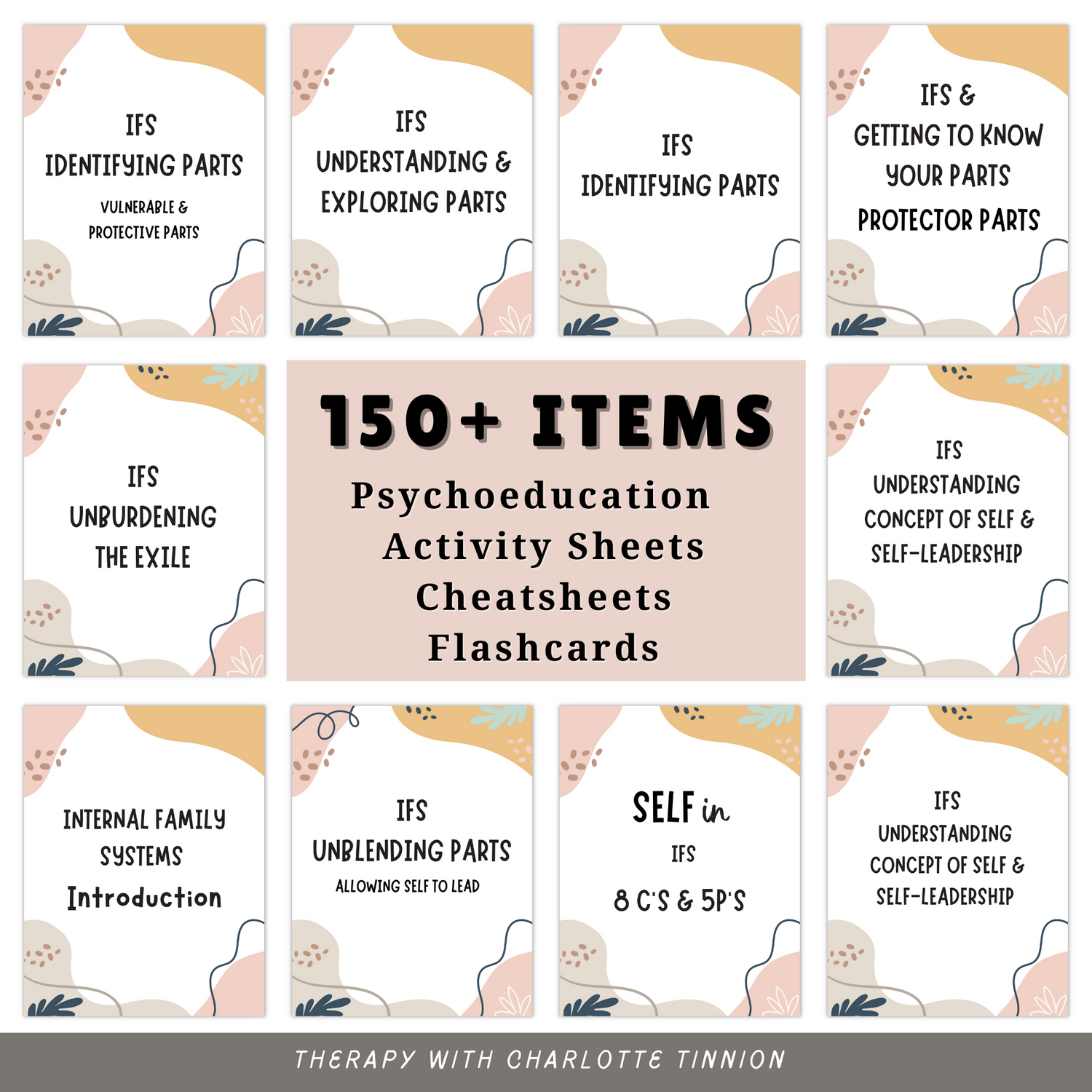
Integrating Internal Family Systems (IFS) into Your Daily Life: A Practical Guide
Internal Family Systems (IFS) therapy is a powerful tool for understanding and healing our inner world.
Developed by Dr. Richard Schwartz, IFS is based on the idea that our minds are composed of different parts, each with its feelings, beliefs, and motivations. These parts, though often in conflict, can work together harmoniously when guided by our core Self. The goal of IFS is to foster this internal harmony by helping us connect with our Self and heal the wounded parts of ourselves.
But how can you bring the insights of IFS into your everyday life? This guide will explore practical ways to integrate IFS principles into your routine, helping you achieve greater self-awareness, emotional balance, and inner peace.
Understanding the Basics of IFS
Before diving into daily practices, it’s important to grasp the foundational concepts of IFS:
- The Self: The Self is the core of who you are. It embodies qualities like compassion, curiosity, calmness, clarity, and confidence. The Self is not a part, but rather the leader who can guide all parts harmoniously.
- Parts: According to IFS, everyone has multiple parts. These parts can be categorized into three main types:
- Exiles: Wounded parts that carry pain, shame, fear, or trauma. They are often hidden or suppressed because their emotions are too overwhelming.
- Managers: Parts that try to protect the system by controlling your environment and behaviors, helping you avoid pain.
- Firefighters: Parts that respond to triggers by acting impulsively to numb, distract, or escape from the pain.
- Unburdening: The process of healing in IFS involves "unburdening" the exiles of their painful emotions and memories, allowing them to reintegrate into the system healthily.

Daily Practices for Integrating IFS
Integrating IFS into your daily life involves cultivating a relationship with your parts and leading from yourself. Here are some practical steps to help you do that:
- Start Your Day with Self-Check-Ins
Begin your day by taking a few moments to connect with yourself. This could be through meditation, journaling, or simply sitting quietly. Ask yourself:
- “What am I feeling right now?”
- “Which parts of me are present?”
- “How can I lead my day from myself?”
This morning ritual helps you start your day with awareness and intention, setting the tone for how you interact with your parts throughout the day.
- Practice Mindful Awareness of Your Parts
As you go about your day, practice noticing your internal reactions. When you feel a strong emotion—whether it's anger, fear, sadness, or anxiety—pause and ask:
- “Which part of me is feeling this way?”
- “What is this part trying to protect me from?”
By identifying and acknowledging your parts, you create space between yourself and your emotions, allowing you to respond with more clarity and compassion.
- Develop a Dialogue with Your Parts
When you notice a part is activated, take a moment to engage in a dialogue with it. For example:
- “Hello, I see you’re feeling angry. Can you tell me why?”
- “What are you trying to protect me from?”
- “How can I support you?”
This practice helps you understand your parts better and reassures them that they are heard and valued. Over time, this dialogue can help to heal wounded parts and reduce internal conflict.

- Use Self-Compassion During Stressful Moments
When life gets tough, it's easy to become overwhelmed by your parts, especially those that are trying to protect you from pain. In these moments, practice self-compassion:
- Acknowledge the part that is stressed or fearful.
- Offer it kindness and understanding.
- Reassure the part that you, as the Self, are there to help.
This approach not only soothes your parts but also strengthens your connection to yourself, making it easier to navigate challenges with grace.
- Reflect on Your Day with Curiosity
At the end of the day, take time to reflect on how your parts showed up. Ask yourself:
- “Which parts were most active today?”
- “How did I respond to them?”
- “What can I learn from today’s experiences?”
Reflecting with curiosity, rather than judgment, helps you gain insights into your internal dynamics and fosters ongoing growth and healing.
- Integrate IFS with Other Daily Practices
You can also incorporate IFS into existing routines, such as exercise, cooking, or creative activities. For example:
- During exercise, notice which parts are energized or resistant.
- While cooking, observe if any parts are seeking comfort through food.
- In creative work, explore which parts are expressing themselves and why.
By bringing IFS awareness into these activities, you deepen your connection with your parts and make everyday moments more meaningful.
Benefits of Integrating IFS into Daily Life
Regularly practicing IFS principles can lead to profound benefits, including:
- Increased Self-Awareness: You become more attuned to your inner world, understanding your motivations, triggers, and needs on a deeper level.
- Emotional Regulation: By recognizing and working with your parts, you can respond to emotions with greater balance and control.
- Improved Relationships: Understanding your parts helps you communicate more openly and empathetically with others, improving your relationships.
- Enhanced Well-Being: As your parts heal and harmonize, you experience more inner peace, resilience, and fulfillment.

Integrating Internal Family Systems into your daily life is a journey of self-discovery and healing.
By regularly connecting with your parts and leading from yourself, you can transform your internal dynamics and create a more harmonious, fulfilling life.
Whether through mindful check-ins, compassionate dialogues, or reflective practices, IFS offers a roadmap for living with greater awareness, balance, and inner peace.
As you continue to explore this path, remember that every part of you has value and every step you take brings you closer to wholeness. Dont forget to grab your free IFS resource here.

